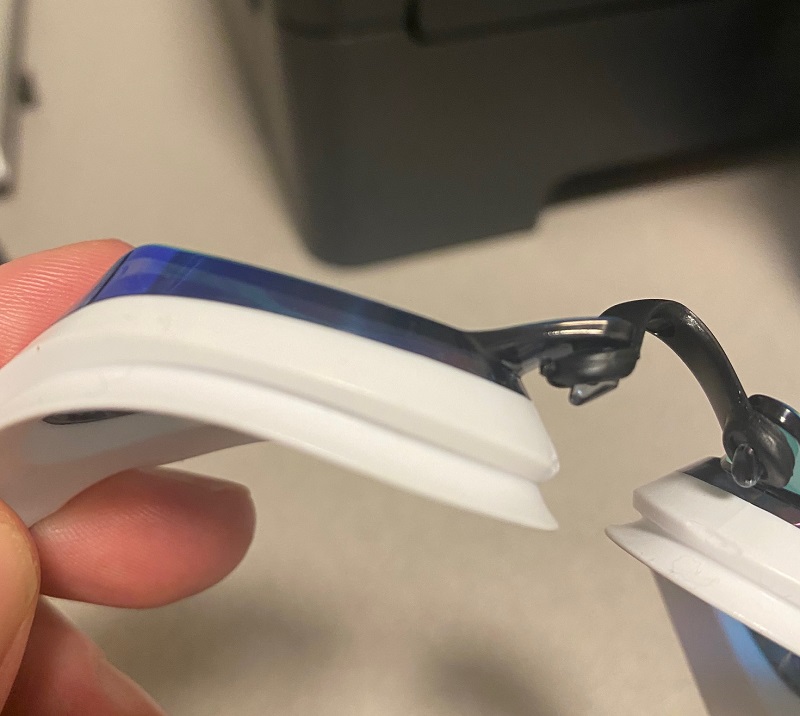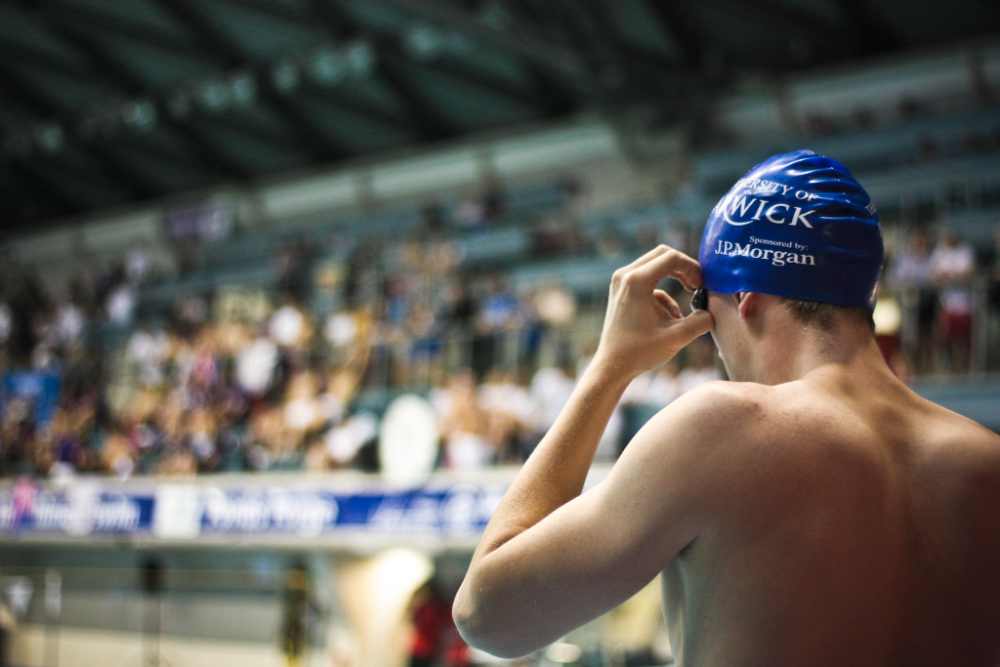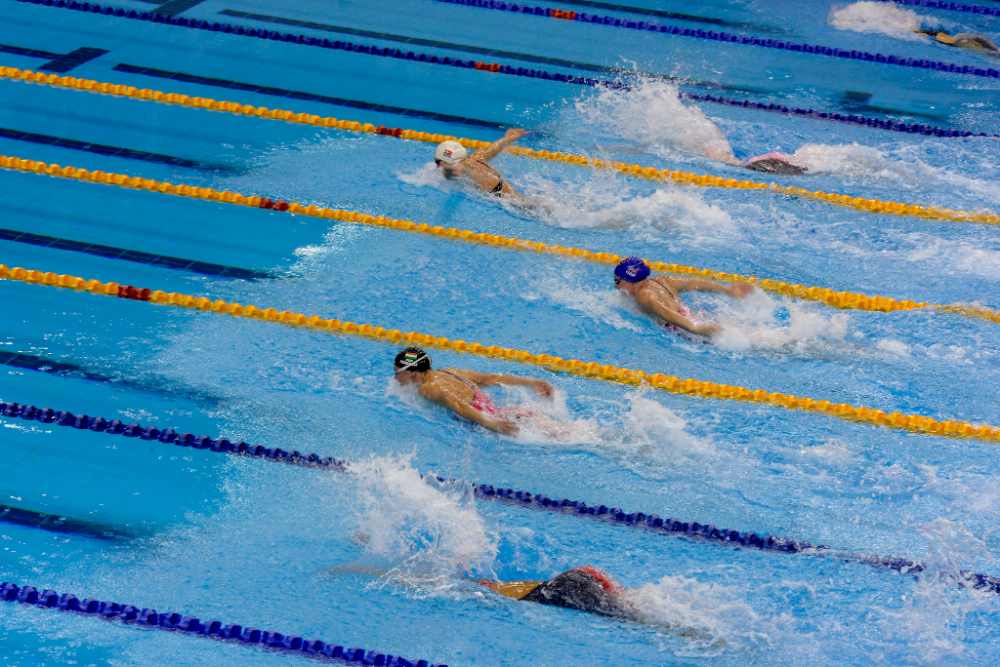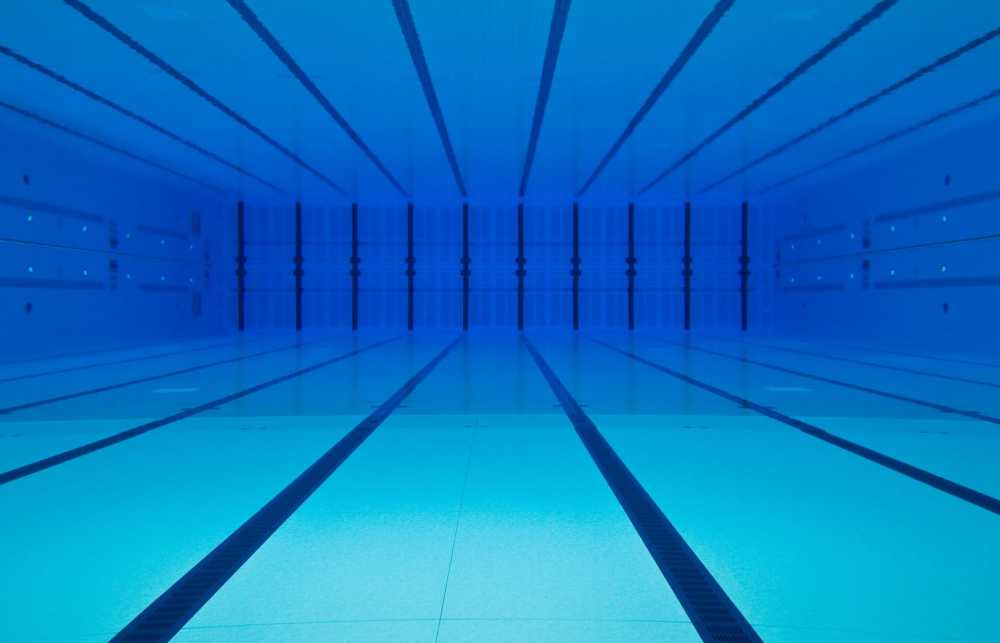Frustrated with leaky goggles? Here’s a step-by-step guide to stopping your swim goggles from leaking.
Swim goggles are every swimmer’s best friend when they hit the water.
They perform a myriad of functions that helps you maximize every stroke and lap in the pool.
- Goggles help you see the walls so you can nail your flip turns.
- They give you that HD vision to see other swimmers in the water.
- Help you see the pace clock and stay on top of the reps and intervals in your swim practice.
- And, if you’ve ever swum in a pool that had water that wasn’t properly balanced, goggles keep your eyes from getting super bloodshot.
But as super-duper as they can be, they can also be frustrating to work with.
A leaky swim goggle—especially when diving into the water on race day—can be a real pain in the chlorinated buttocks.
Fortunately, there are some simple things you can do to stop your swim goggles from leaking.
Let’s do this.
Adjust the nose bridge.
Most swim goggles come with a variety of nose bridges at different widths. Removing and installing these is relatively straightforward; unclip the nose bridge from the lens and try another one until you find a comfortable and snug fit.
If you want to be able to adjust the width of the nose bridge, consider picking up a pair of swim goggles that can use a chunk of the head strap as a modified nose bridge.
Swedish goggles (including the classic Swede and others like the TYR Socket Rocket) make it easy to tug some head strap through the lens. From there, you can tighten or loosen as necessary.
The goggles should sit comfortably against the sides of the nose. If they are digging into your nose or there is ample space between the nose and the ocular lenses, the chance of a leak increases.
A proper nose bridge solves most leak issues with swim goggles.
Get a good angle on the head straps.
Swim goggles come with head straps to keep the lenses secure on your face when diving into the water, swimming for extended periods of time, and while you push off.
When the head straps droops (i.e. slides down toward the back of your neck), the top of the goggle lens starts to peel away from the face.
Head straps that have the proper amount of tension will stay in place while you swim.
Obviously, there is a balance to be found here.
You don’t want your swim goggles to be so tight that they leave your face with indentations (“racoon eyes”) and a face that feels like a pimple that keeps getting squeezed and not popped.
Look for goggles with silicone gaskets.
Between the goggle lens and your skin is often a silicone gasket.
They act as a skirt, lightly compressing into the skin to create a seal, keeping water out and your vision clear.

Most popular swim goggles, including the Vanquishers, Socket Rockets, and more all have slim silicone gaskets that do an excellent job of keeping water out of your swim goggles.
Wear a swim cap over your goggle straps.
Ever notice how elite competitive swimmers typically race with a swimming cap over their swimming goggles?
While swim caps have a lot of functions—keeping hair dry isn’t one of them, oddly enough—they are also fantastic at keeping your goggles securely in place.
When you are stepping up onto the block on race day at the big meet, the last thing you want is to be worrying about your goggles leaking, or worse, coming off.
Strapping a swim cap (or two, in the case of some swimmers) over your goggles is an excellent way to keep them in place.
Sink them into your face
Lastly, when you put on your swim goggles, don’t forget to sink them into the skin around your eyes.
Gently pressing your goggles–gently being the operative word here!–into your face will help to strengthen the seal of the goggles (another good reason to select swim goggles that have a silicone gasket around the edges of the lenses).
Loose swim goggles that don’t have that little bit of suction to your face are a breeding ground for leaks, so don’t forget this simple tip when you are hopping into the water.
Summary
In closing, your swim goggles are your best friend in the pool.
(And if you aren’t sold on how much better swim goggles make your life in the water, read this guide on why everyone should wear swim goggles at the pool.)
All you have to do is make sure that you get a proper fit on the goggles, look for a set that have a silicone skirt, and consider throwing a swim cap over the goggle straps for swim meets.
A leak-free swim awaits!


